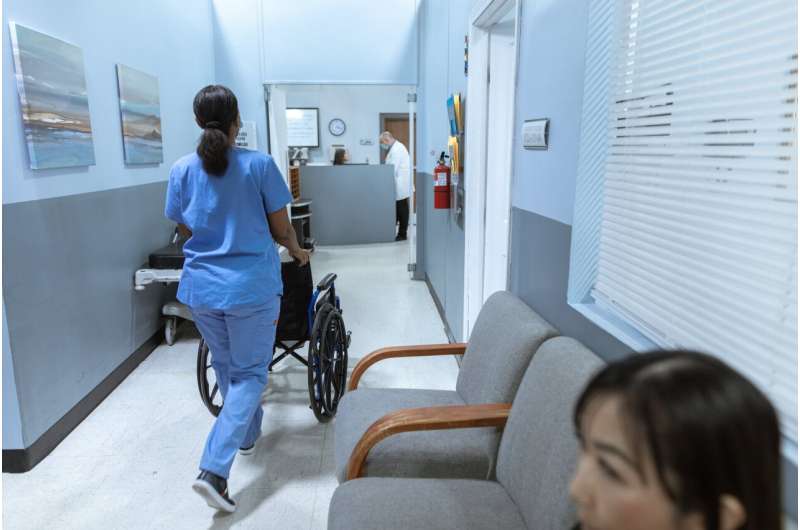Innovative Algorithm Speeds Up Cell Identification to Improve Cancer Treatment Selection

A new AI-driven algorithm called TACIT can identify cell types within tissues in just minutes, revolutionizing cancer diagnostics and personalized treatment planning by providing fast, accurate cellular analysis.
Researchers at Virginia Commonwealth University have developed a groundbreaking computational tool called TACIT that can rapidly identify cell types within tissues, transforming cancer diagnostics and personalized treatment approaches. Published in Nature Communications on June 16, 2025, this novel algorithm leverages artificial intelligence to analyze multiplexed imaging data, accurately distinguishing over 5 million cells across various body systems such as the brain, gut, and oral glands.
Traditionally, cell identification in research and clinical settings could take over a month, involving labor-intensive and time-consuming methods. TACIT drastically reduces this time to just minutes, enhancing both efficiency and accuracy. Created by Dr. Jinze Liu, a biostatistics professor, and Dr. Kevin Byrd, a molecular biology expert, the tool assigns cell identities based on marker expression profiles using a threshold-based approach. The method outperforms existing unsupervised algorithms in accuracy and scalability, revealing cellular relationships and states that were previously difficult to detect.
By utilizing artificial intelligence, TACIT not only accelerates research workflows but also improves diagnostic precision. It can identify cellular and molecular patterns that predict patient responses, aiding in the selection of optimal therapies and inclusion in clinical trials. Its ability to integrate genetic and protein data ensures high confidence in the results, fostering trustworthiness.
The applications of TACIT extend beyond cancer diagnosis. It offers potential in clinical trial planning by identifying spatial biomarkers that forecast treatment outcomes and determine patient eligibility, preventing unnecessary exposure to ineffective therapies. The algorithm's versatility also supports pharmacological decision-making by mapping FDA-approved drugs to specific tissue markers, enabling personalized medication choices.
Moreover, TACIT is adaptable across multiple spatial biology platforms, consolidating diverse data types into a unified understanding of cellular environments—akin to a modern Rosetta Stone for biological data. The team has innovatively linked slide proteomics and transfer proteomics, creating comprehensive cell multi-omics profiles that provide a multi-layered view of cell behavior.
This technological leap promises to revolutionize how scientists and clinicians analyze tissue composition, advancing precision medicine and cellular research. The development marks a significant step forward in integrating artificial intelligence into biomedical sciences to achieve faster, more accurate, and scalable cellular insights.
For further details, see the original study: Khoa L. A. Huynh et al., "Deconvolution of cell types and states in spatial multiomics utilizing TACIT," Nature Communications, 2025.
Stay Updated with Mia's Feed
Get the latest health & wellness insights delivered straight to your inbox.
Related Articles
Research Explores Why For-Profit Hospitals Have Poorer Patient and Nursing Outcomes
A recent study from the University of Pennsylvania explores why for-profit hospitals tend to have poorer patient safety and nursing care outcomes, emphasizing the importance of investment in nursing services for quality healthcare.
Clinical Trial Finds Ivabradine Ineffective in Reducing Myocardial Injury Post-Noncardiac Surgery
A large clinical trial revealed that ivabradine does not reduce the risk of myocardial injury after noncardiac surgery, indicating the need for alternative protective strategies. Source: https://medicalxpress.com/news/2025-09-ivabradine-occurrence-myocardial-injury-noncardiac.html
Poor Heart Health in Midlife Elevates Dementia Risk Among Black Americans, Study Finds
A new study reveals that poor heart health in midlife significantly raises the risk of dementia among Black Americans. Managing hypertension and diabetes early may help protect brain health and reduce neurodegenerative disease risk.
Research Highlights the Unpredictable Nature of Chikungunya Outbreaks
A recent study analyzing 86 chikungunya outbreaks reveals the unpredictable nature of the disease's size and severity, emphasizing challenges in public health planning and vaccine development.



